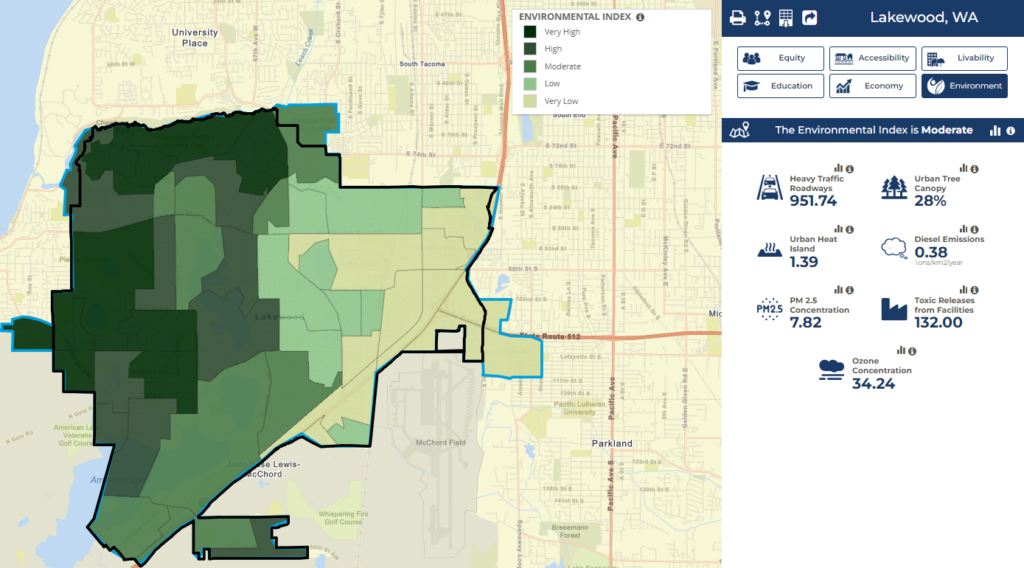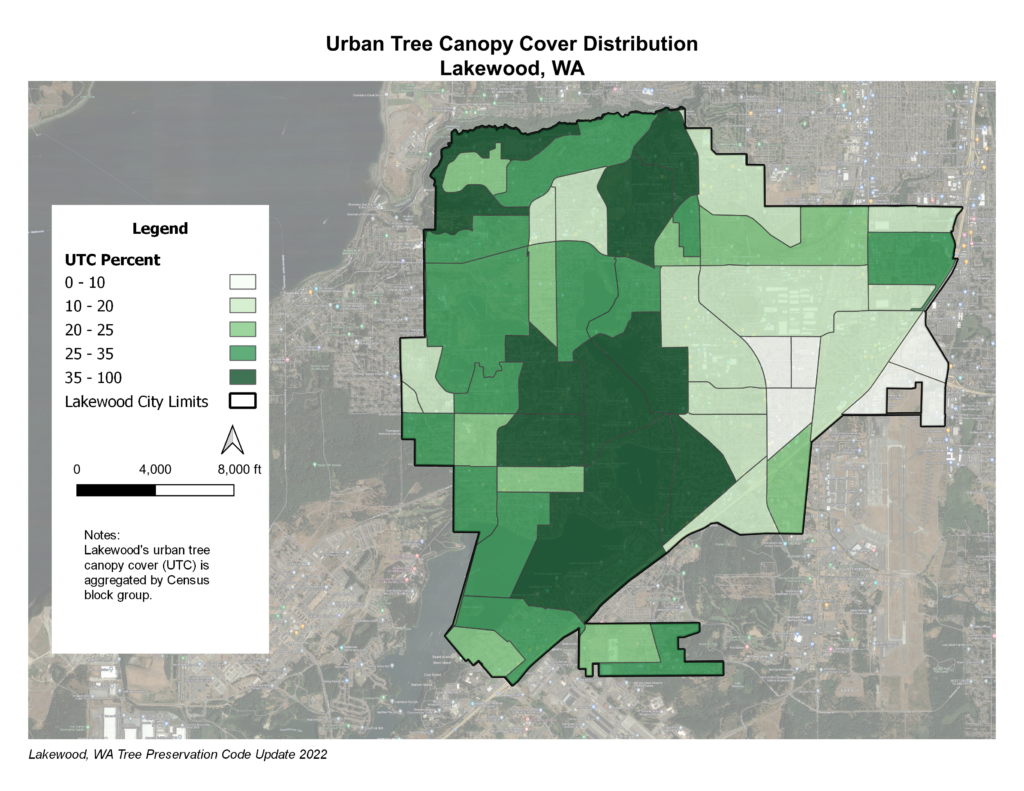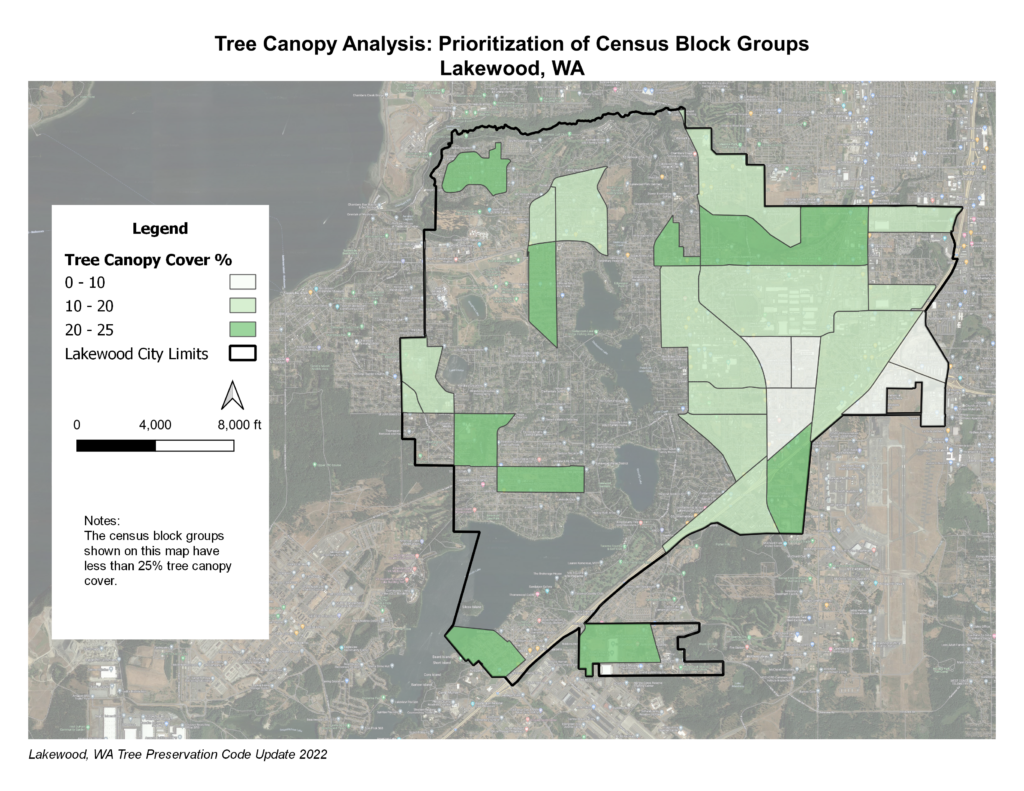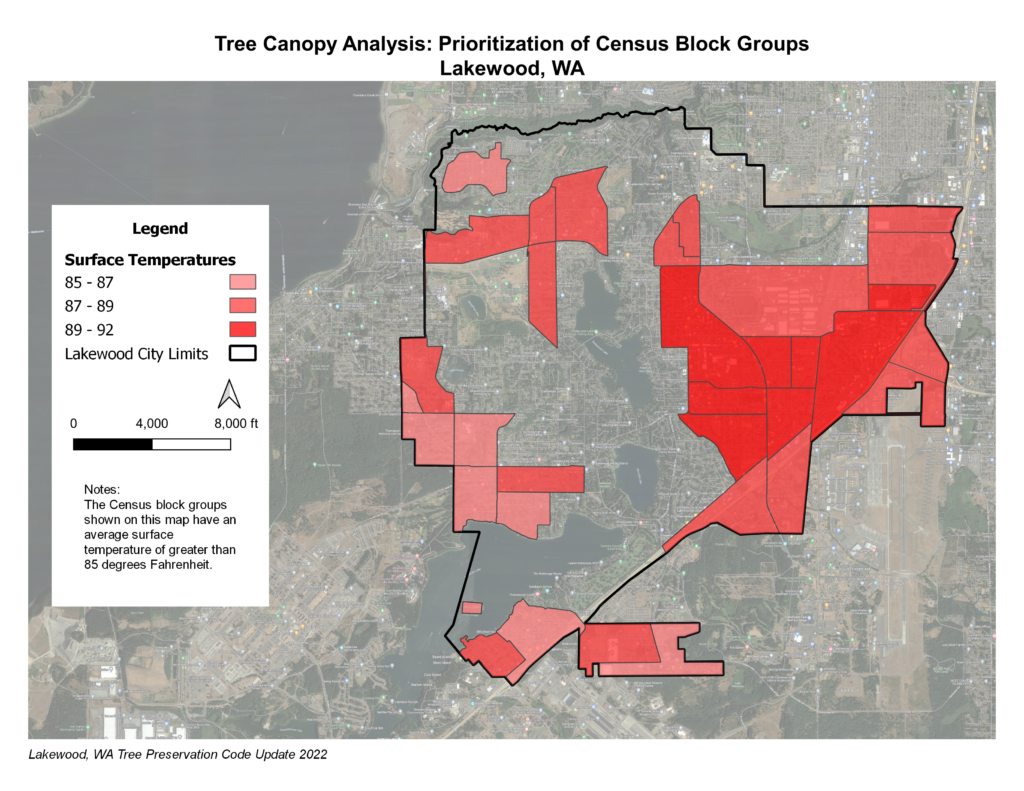On February 20, 2025, the Lakewood Tree Assessment Report was released. Watch the February 19, 2025 Planning Commission introduction of the report. You can view the full report here starting on page 29. You can view the 2/19/25 presentation slide deck here. The assessment report will be used as the basis for the creation of an urban forestry program as directed by City Council priorities and Comprehensive Planning Goals.
In August 2024, Lakewood volunteers assisted the Tacoma Tree Foundation in taking temperature readings to ID the hottest areas in Lakewood. View the report here. This data, along with the tree inventory results, will help the City prioritize actions to achieve its 2050 goal of a 40% tree canopy while also improving the quality of life for residents.
6/30/24: Lakewood celebrated improving the rare native Oak prairie vegetation at the Old Settlers Cemetery. Watch here to learn more.
On May 22, 2023, the Lakewood City Council accepted a report from the UW Evans School of Public Policy & Governance that provided guidance for establishing an urban forestry program over a 5 year period. The Council obligated $340,000 of ARPA funds to help fund the report’s recommendations for a certified arborist, tree assessment, and public outreach efforts through 2026.
Announcements
On November 7, 2022 the City Council adopted new tree regulations, including new tree preservation rules, as described in Ordinance 775 – click here to view. As of March 1, 2023, you may need a permit to remove a tree. See handout for details on the updated code requirements.
Thousands of American soldiers perished in WWI, and 500 oak trees were planted along I-5 in their memory. As the highway expanded, many oaks were destroyed. Lakewood resident Mike Farley collected acorns from these oaks and worked with the City of Lakewood to find a new “Boulevard of Remembrance” in Fort Steilacoom Park.
Trees improve Quality of Life




Local Tree Code and State Law Related to Trees
There are three areas in the Lakewood Municipal code related to tree protection/preservation:
- Lakewood Municipal Code Title 18A.70.300: Tree Preservation, promotes tree preservation by protecting the treed environment of the City of Lakewood by regulating the removal of significant trees and providing incentives to preserve trees that, because of their size, species, or location, provide special benefits.
- Lakewood Municipal Code Critical Areas Ordinance, Chapter 14, which regulates critical areas, including Priority White Oak Woodlands. Priority White Oak Woodlands are defined in LMC 14.165 as: “forested areas of pure oak, or of oak/conifer associations one acre or larger, and all oak trees located within, where oak canopy coverage of the area is at least 25%. Stands of oaks less than 1 acre in size may also be considered priority habitat when found to be particularly valuable to fish and wildlife (i.e., they contain many cavities, have a large diameter at breast height (dbh), are used by priority species, or have a large canopy).“
- Shoreline Master Program– Provides for the management and protection of the state’s shoreline resources located in the City of Lakewood.
Tree Removal Information
Tree removal permits are required for any tree to be removed on a property that is not exempt from the tree preservation regulations, the critical areas ordinance or the shoreline master program. If your property is located in a critical area or shoreline jurisdiction, please contact our permitting department at [email protected].
Starting March 1, 2023: Single-family lots over 10,000 square feet, multifamily, and non-residential lots need a tree removal permit for removal of significant trees.
Significant trees are defined as:
- Evergreen trees and deciduous trees with a minimum diameter of nine (9) inches when measured at four and one-half (4.5) feet above ground.
- Oregon white oaks (also known as Garry oaks) with a minimum diameter of four (4) inches when measured at four and one-half (4.5) feet above ground.
- Regardless of the tree diameter, is determined to be significant by the Director due to the uniqueness of the species or provision of important wildlife habitat.
Significant trees on existing single-family lots may be removed with a tree removal permit and without tree replacement, except Oregon white oaks (see Ordinance 775, LMC 18A.70.330), based on the following:
| Maximum Tree Removal on Existing Single-Family Lots |
|---|
| Lot Size | Maximum number of significant trees allowed to be removed in 1 year | Maximum number of significant trees allowed to be removed in 5 years |
| *Lots up to 10,000 sq. ft. | N/A | N/A |
| Lots 10,001 to 30,000 sq. ft. | 2 | 4 |
| Lots 30,001 sq. ft. or greater | 4 | 8 |
| *LMC 18A.70.310(A) states that single-family lots up to 10,000 sq. ft. are exempted from tree preservation requirements. |
https://lakewood.municipal.codes/LMC/18A.70.320
To find out the exact size of your lot, visit the City’s interactive GIS
To apply for a tree removal permit, please visit the City’s online permitting dashboard and select “apply online”. Tree removal permits are Land Use/ Environmental Permit applications, forms are available on the Development Services page.
How to Report Illegal Tree Removal
All recent permitting activity can be found on the City’s online permit center. Tree removal permits are not always required on lots zoned residential or industrial.
You can report any unauthorized tree removal to [email protected] or by using the MyLakewood311 app, and a member of our team will notify our code enforcement officers of the potential violation.

